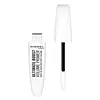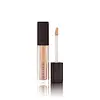What's inside
What's inside
 Key Ingredients
Key Ingredients

 Benefits
Benefits

 Concerns
Concerns

 Ingredients Side-by-side
Ingredients Side-by-side

Water
Skin ConditioningAcrylates Copolymer
Glyceryl Stearate
EmollientDisteardimonium Hectorite
StabilisingTalc
AbrasiveStearic Acid
CleansingPropylene Glycol
HumectantTriethanolamine
BufferingParaffin
PerfumingCera Alba
EmollientPropylene Carbonate
SolventSynthetic Wax
AbrasiveOleic Acid
EmollientEthylhexylglycerin
Skin ConditioningAlcohol Denat.
AntimicrobialPhenoxyethanol
PreservativeCera Microcristallina
Emulsion StabilisingBenzyl Alcohol
PerfumingPolyethylene
AbrasiveAscorbyl Palmitate
AntioxidantTocopherol
AntioxidantPanthenol
Skin ConditioningSodium Laureth Sulfate
CleansingSimethicone
EmollientGlycine Soja Oil
EmollientCellulose
AbsorbentTrisodium EDTA
Xanthan Gum
EmulsifyingAloe Barbadensis Leaf Extract
EmollientPotassium Sorbate
PreservativeMethylparaben
PreservativeArgania Spinosa Kernel Oil
EmollientRicinus Communis Seed Oil
MaskingSimmondsia Chinensis Seed Oil
EmollientTocopheryl Acetate
AntioxidantPropylparaben
PreservativeAmmonium Hydroxide
BufferingTetrasodium EDTA
Citric Acid
BufferingCocos Nucifera Oil
MaskingHippophae Rhamnoides Fruit Juice
Skin ConditioningTrideceth-9
EmulsifyingBisabolol
MaskingCI 77891
Cosmetic ColorantWater, Acrylates Copolymer, Glyceryl Stearate, Disteardimonium Hectorite, Talc, Stearic Acid, Propylene Glycol, Triethanolamine, Paraffin, Cera Alba, Propylene Carbonate, Synthetic Wax, Oleic Acid, Ethylhexylglycerin, Alcohol Denat., Phenoxyethanol, Cera Microcristallina, Benzyl Alcohol, Polyethylene, Ascorbyl Palmitate, Tocopherol, Panthenol, Sodium Laureth Sulfate, Simethicone, Glycine Soja Oil, Cellulose, Trisodium EDTA, Xanthan Gum, Aloe Barbadensis Leaf Extract, Potassium Sorbate, Methylparaben, Argania Spinosa Kernel Oil, Ricinus Communis Seed Oil, Simmondsia Chinensis Seed Oil, Tocopheryl Acetate, Propylparaben, Ammonium Hydroxide, Tetrasodium EDTA, Citric Acid, Cocos Nucifera Oil, Hippophae Rhamnoides Fruit Juice, Trideceth-9, Bisabolol, CI 77891
Isododecane
EmollientDisteardimonium Hectorite
StabilisingCera Alba
EmollientCopernicia Cerifera Cera
EmollientOzokerite
Emulsion StabilisingTalc
AbrasiveLanolin Acid
CleansingEthylhexyl Palmitate
EmollientPropylene Carbonate
SolventMethylparaben
PreservativePhenoxyethanol
PreservativeAscorbyl Palmitate
AntioxidantIsopropyl Myristate
EmollientPropylparaben
PreservativeCarthamus Tinctorius Seed Oil
MaskingAloe Barbadensis Leaf Extract
EmollientRetinyl Palmitate
Skin ConditioningTocopherol
AntioxidantEuphrasia Officinalis Extract
AntimicrobialCentaurea Cyanus Flower Extract
AstringentAnthemis Nobilis Flower Extract
MaskingMica
Cosmetic ColorantCI 77891
Cosmetic ColorantCI 77007
Cosmetic ColorantCI 77510
Cosmetic ColorantCI 77499
Cosmetic ColorantCI 77491
Cosmetic ColorantCI 77492
Cosmetic ColorantCI 77163
Cosmetic ColorantIsododecane, Disteardimonium Hectorite, Cera Alba, Copernicia Cerifera Cera, Ozokerite, Talc, Lanolin Acid, Ethylhexyl Palmitate, Propylene Carbonate, Methylparaben, Phenoxyethanol, Ascorbyl Palmitate, Isopropyl Myristate, Propylparaben, Carthamus Tinctorius Seed Oil, Aloe Barbadensis Leaf Extract, Retinyl Palmitate, Tocopherol, Euphrasia Officinalis Extract, Centaurea Cyanus Flower Extract, Anthemis Nobilis Flower Extract, Mica, CI 77891, CI 77007, CI 77510, CI 77499, CI 77491, CI 77492, CI 77163
Ingredients Explained
These ingredients are found in both products.
Ingredients higher up in an ingredient list are typically present in a larger amount.
Aloe Barbadensis Leaf Extract is an extract of the leaves of the aloe, Aloe barbadensis, Liliaceae.
Aloe is one of the most well-known natural soothing ingredients, and for good reason. It’s full of water and has a cooling, calming effect on the skin, especially when it’s sunburned, itchy, or irritated. Aloe also helps your skin stay hydrated and smooth by mimicking what healthy skin naturally produces. On top of that, it contains vitamins and nutrients that support skin recovery.
It doesn’t protect you from the sun, but it can help your skin bounce back after too much time in it.
Let’s get into the details:
Aloe contains antioxidant Vitamins A, C, and E, which help fight off free radicals (unstable molecules from things like pollution that can damage your skin).
It’s also rich in polysaccharides, which are natural sugars that help hydrate the skin by acting like the skin’s own moisturizing agents. These, along with other sugars like monosaccharides, help form a protective barrier that locks in moisture.
Aloe works as both a humectant and an emollient. That means it draws water into the skin (humectant) and helps trap it there (emollient), making it an effective natural moisturizer.
You’ll also find a mix of other skin-supporting ingredients in aloe, including folic acid, choline, calcium, amino acids, fatty acids, and even Vitamin B12.
Out of the 420+ species of aloe, Aloe barbadensis is the most widely used in skincare products thanks to its gentle yet effective properties.
There are over 420 species of aloe but Aloe Barbadensis is the most commonly used for topical products.
Learn more about Aloe Barbadensis Leaf ExtractAscorbyl Palmitate is created by combining pure Vitamin C and palmitic acid. It is an antioxidant and helps reduce hyperpigmentation.
This ingredient is a more stable version of Vitamin C, meaning it does not disintegrate as quickly when exposed to sunlight. However, studies show it does not penetrate skin as well as pure Vitamin C.
Ascorbyl Palmitate is oil soluble.
Read more about other types of Vitamin C:
Learn more about Ascorbyl PalmitateCera alba is beeswax, or the wax used by bees to make honeycombs. It is a texture-enhancer and emollient. A study from 2003 found beeswax to be a stronger emollient than ingredients such as petroleum jelly.
As an emollient, beeswax helps hydrate the skin by creating a barrier on top. This barrier traps moisture in.
Emulsifiers help prevent ingredients from separating. This helps create consistent texture.
The structure of beeswax is mainly long-chain alcohols and the esters of fatty acids.
There are three types of beeswax: yellow, white, and absolute. Yellow is pure beeswax taken from the honeycomb. White beeswax is created by filtering or bleaching yellow beeswax. Absolute beeswax is created by treating beeswax with alcohol. Beeswax used in cosmetics are purified.
Beeswax has been used throughout history and even in prehistoric times. Some common uses for beeswax still used today are making candles, as a waterproofing agent, and polish for leather.
Learn more about Cera AlbaCi 77891 is a white pigment from Titanium dioxide. It is naturally found in minerals such as rutile and ilmenite.
It's main function is to add a white color to cosmetics. It can also be mixed with other colors to create different shades.
Ci 77891 is commonly found in sunscreens due to its ability to block UV rays.
Learn more about CI 77891Disteardimonium Hectorite comes from the clay mineral named hectorite. It is used to add thickness to a product.
It can also help stabilize a product by helping to disperse other ingredients.
Hectorite is a rare, white clay mineral.
Learn more about Disteardimonium HectoriteMethylparaben is a preservative and is a paraben. It is used to prevent the growth of fungus, mold, and other harmful bacteria. Parabens are chemicals used as preservatives in both cosmetics and food.
Methylparaben can be synthetically created. It can also be found naturally in some fruits, such as blueberries.
Oftentimes, Methylparaben is combined with other parabens to help increase the shelf life.
The safety of Methylparaben is currently being studied. While ongoing studies are looking into the safety of parabens, the results have been very mixed. Some studies have not found Methylparaben to be harmful.
Learn more about MethylparabenPhenoxyethanol is a preservative that has germicide, antimicrobial, and aromatic properties. Studies show that phenoxyethanol can prevent microbial growth. By itself, it has a scent that is similar to that of a rose.
It's often used in formulations along with Caprylyl Glycol to preserve the shelf life of products.
This ingredient is a solvent. It helps dissolve active ingredients and alter the texture of products.
Propylene Carbonate is commonly used in makeup and with clay, such as montmorillonite or bentonite.
Studies show this ingredient to be safe for cosmetics. When it is undiluted, it can cause skin irritation. (It is always diluted in skincare and makeup). This ingredient is water-soluble.
Propylene Carbonate is created from propylene glycol and carbonic acid.
Learn more about Propylene CarbonatePropylparaben is a preservative and is a paraben with antifungal and antimicrobial properties.
This ingredient can be naturally found in plants and insects, but most of it is synthetically manufactured for human use. In cosmetics, it is usually created by reacting para-aminobenzoic acid and propanol (an alcohol).
You can usually find this ingredient in water-based products.
Parabens have come under controversy due to the claim they are hormone disruptors. Studies show conflicting results. We recommend speaking with a professional if you have any concerns.
Propylparaben is commonly found in food, medicine, and cosmetics.
Learn more about PropylparabenTalc is a clay mineral. It helps absorb moisture and improve the texture of products. Like other types of clay, Talc can have a slight exfoliating effect on skin. Talc can be added to increase the volume of products.
Some Baby powders are made by combining talc with corn starch. The word "talc" comes from Latin and originates from Arabic. Talc is a mineral commonly found throughout the world.
If you have any concerns about using talc, we recommend checking out the FDA's official page.
Learn more about TalcTocopherol (also known as Vitamin E) is a common antioxidant used to help protect the skin from free-radicals and strengthen the skin barrier. It's also fat soluble - this means our skin is great at absorbing it.
Vitamin E also helps keep your natural skin lipids healthy. Your lipid skin barrier naturally consists of lipids, ceramides, and fatty acids. Vitamin E offers extra protection for your skin’s lipid barrier, keeping your skin healthy and nourished.
Another benefit is a bit of UV protection. Vitamin E helps reduce the damage caused by UVB rays. (It should not replace your sunscreen). Combining it with Vitamin C can decrease sunburned cells and hyperpigmentation after UV exposure.
You might have noticed Vitamin E + C often paired together. This is because it is great at stabilizing Vitamin C. Using the two together helps increase the effectiveness of both ingredients.
There are often claims that Vitamin E can reduce/prevent scarring, but these claims haven't been confirmed by scientific research.
Learn more about Tocopherol